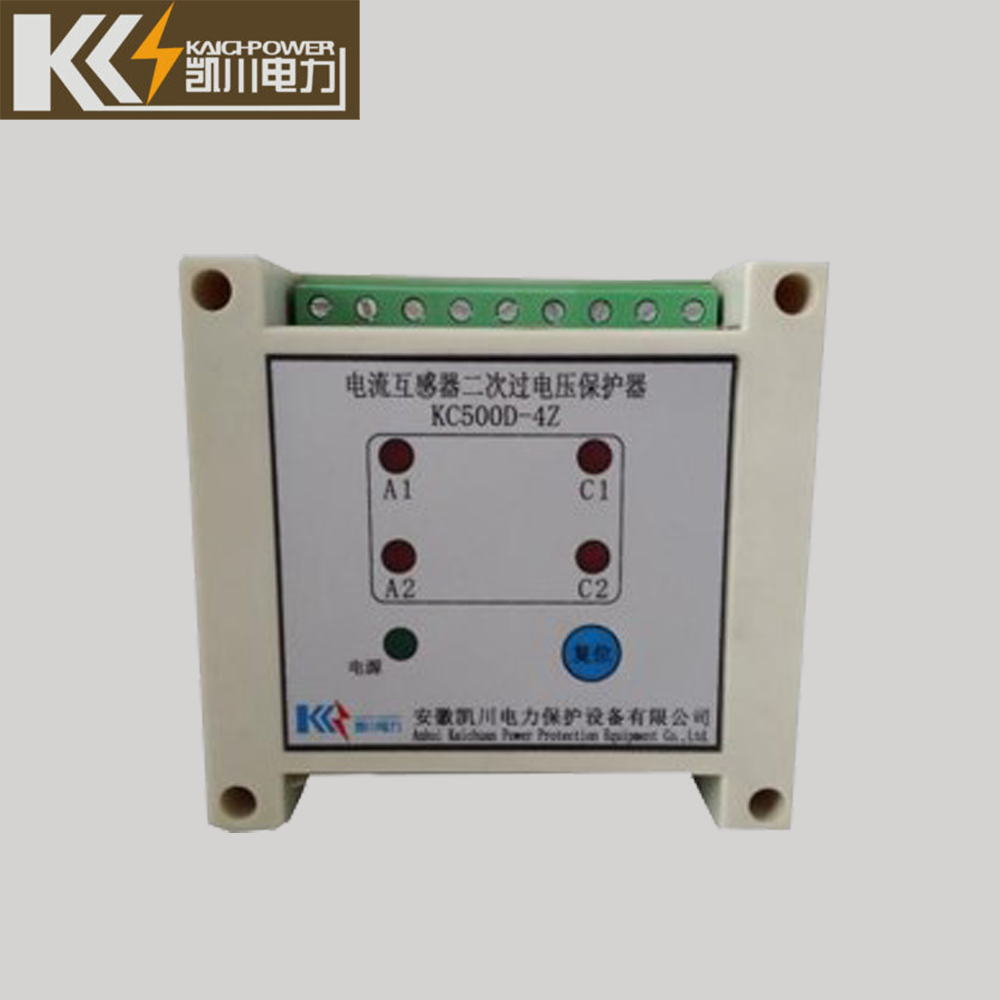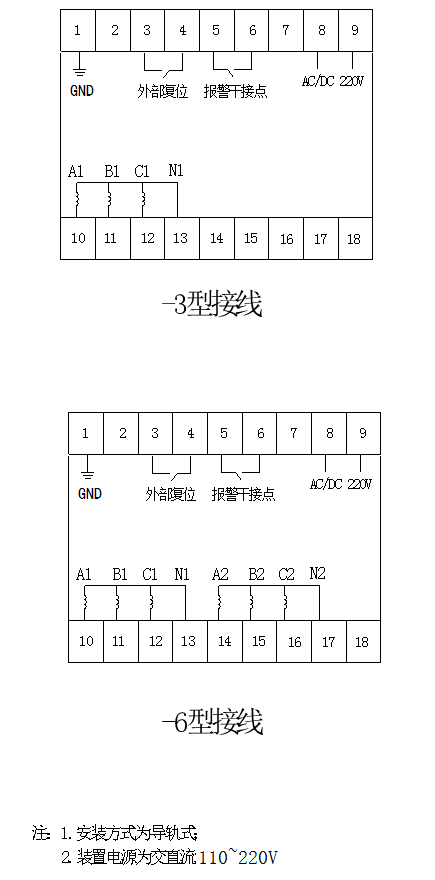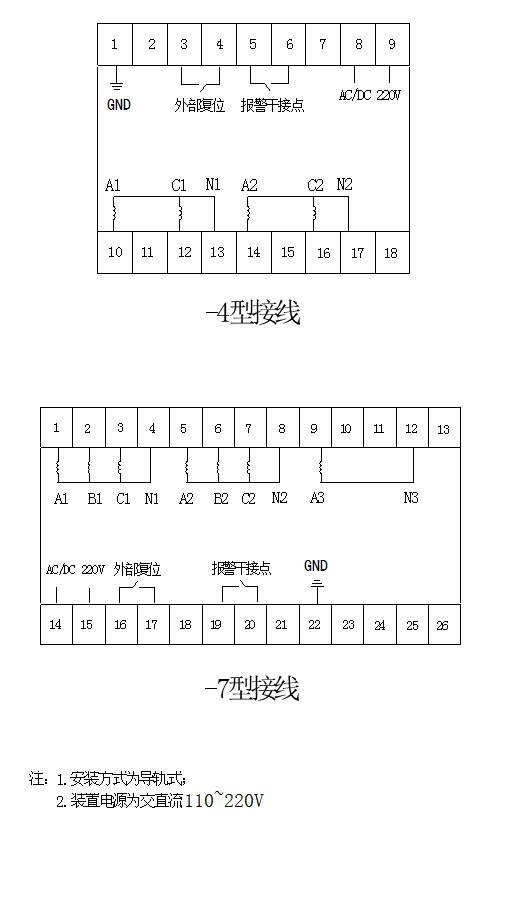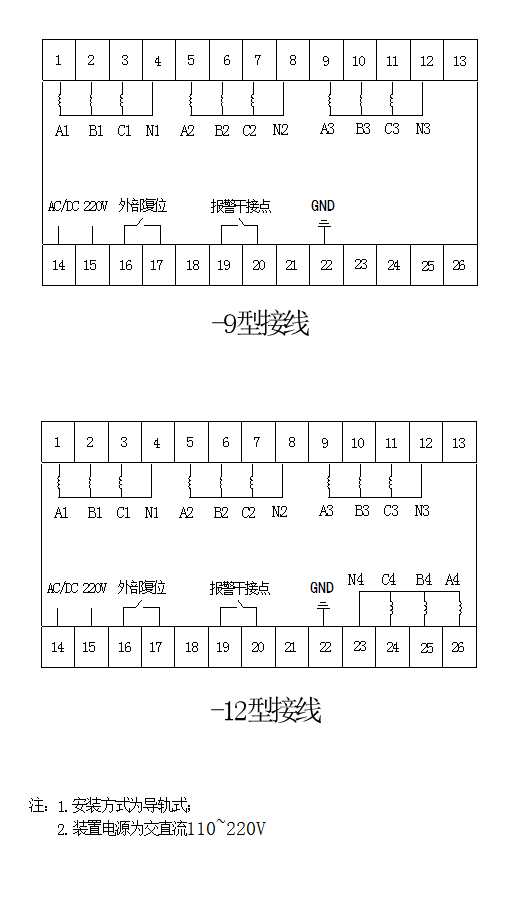
KC500D CT secondary overvoltage protector
Once the secondary winding of the current transformer and its loop are open during operation, an overvoltage of several thousand volts or even tens of thousands of volts will be generated. This not only causes harm to the insulation of the secondary system, but also causes the transformer to be burnt out due to overexertion, and even endangers the safety of operators.
1.KC500D CT
The current transformer secondary overvoltage circuit protector developed by Kaich is specially used to limit the overvoltage generated when the secondary open circuit occurs, and has action contact output, automatic light-emitting display, automatic blocking differential protection, There are manual or automatic reset functions, as well as multiple combinations of protectors with different functions.
2. Function
- After the protector acts, it can limit the secondary overvoltage of the current transformer to a safe level;
- After the protector acts, the fault circuit is displayed, which is convenient for troubleshooting;
- There is a contact signal output after the protection action, which can be referenced by the external circuit;
- There is an alarm sound prompt after the protection action, reminding the user to troubleshoot in time.
3.Features
- After the protector acts, it can limit the secondary overvoltage of the current transformer to a safe level;
- After the protector acts, the fault circuit is displayed, which is convenient for troubleshooting;
- There is a contact signal output after the protection action, which can be referenced by the external circuit;
- There is an alarm sound prompt after the protection action, reminding the user to troubleshoot in time.
4.Principle
The current transformer secondary open-circuit protector is mainly composed of nonlinear resistors with close to ideal protection characteristics. The protector is connected across both ends of the CT secondary winding. During normal operation, the leakage current is extremely small, and it is in a high resistance state of more than 100MΩ; when the CT secondary circuit is open, the voltage generated is much higher than the normal operating voltage, and the protector quickly Action, a low-resistance state similar to a short circuit, effectively limiting overvoltage.
The protector can provide protection for 18 CT secondary circuits at most. The fault circuit is displayed on the rear panel of the action, and there is a passive contact signal output. After troubleshooting, press the manual reset button, and the circuit will resume normal operation after returning to its original state.
5. Wiring
The standard protector is suitable for the current transformer with the secondary winding star connection. The terminals A, B, C and common terminal N of the protector are directly connected to the A, B, C phases and the secondary of the secondary winding of the current transformer. on the neutral point N. If only A, B (or A) phase windings are used, then C (or B, C) phases can be left unconnected, which will not affect the normal operation of the protector.
For the three-phase current transformer group whose secondary winding needs to be connected in a delta connection, our company can make it specially for the user, but it needs to be specified when ordering. See the attached figure for the word connection of the external lead terminal of the protector.



6. Selection of KC500D CT Secondary Overltage Protector
Type | KC500D-3Z | KC500D-6Z | KC500D-9Z | KC500D-12Z |
No. of Winding | 1~3 | 4~6 | 7~9 | 10~12 |
Protectors with more than 12 windings are non-standard products. The single current transformer secondary overvoltage protector produced by our company can provide protection for up to 18 CT secondary winding circuits.
7. Parameters of KC 500D
Normal leakage current IL20V | ≤1uA |
input resistance | >100M |
turn-on voltage | Factory setting 200±10%V |
On time | 50ms≤Ts≤250ms |
Alarm output contact capacity | AC220V/5A;DC110V/5A |
Protection relay contact capacity | AC220V/5A |
Long-term allowable working current after action | 5A |
Maximum allowable inrush current (peak value) | 25A |
Working power | AC/DC 110`220V,50HZ |
Power consumption | ≤5W |
Compound method | Manual button reset, manual reset optional |
Executive standard | GB 1208、IEC834-1 |
Seismic performance | 10-50-10HZ 2g 3min |
working environment | Temperature:-20℃~+70℃ Humidity:≤95%RH |
8. Installation
- The installation point of the protector should be as close as possible to the protected current transformer, and it is convenient for inspection.
- When the lead wire is long, try to use armored cable to prevent wire breakage.
- 12-way and below are track-type installation, and 12-way and above are panel-type installation. If the user has special requirements, the 12-way and below can also be made into a panel installation according to the user’s requirements.
- 1-6 windings: length 115* width 90* height 40.
- 7-12 windings: length 145* width 90* height 40.
10. Using and Maintenance
- The protector should be tested before use. When using the multimeter resistance gear to test both ends of A (or B or C) and N, the insulation resistance value should not be less than 20MΩ.
- When testing the action value, firstly adjust the voltage regulator to the 0V position, connect the AC220V power supply of the protector and the voltage regulator, the work indicator light of the protector is on, gradually increase the output voltage of the voltage regulator to the action voltage value of the protector, and then This voltage is momentarily applied to the A (or B or C) and N ends of the protector. At this time, the protector should act, and the corresponding action indicator lights up. At the same time, use a multimeter to measure the output contact of the protector. The open contact is closed and the closed contact is open. Finally press the reset button, the action indicator light should go out after the protector is reset.
- A current limiting resistor should be added to the test loop to adjust the output current within 10mA.
- Any type of protector requires no maintenance.
- It can be inspected once a month, and at least once every three years.